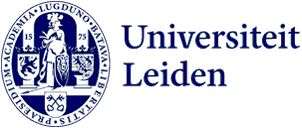
How did trade networks arise in the third millennium BC?
Lapis lazuli from Afghanistan, amber from the Baltic and tin from Tajikistan. In the third millennium BC objects and raw materials were transported over thousands of kilometres. What were they exchanged for and why did people in small-scale societies in West Asia join these large trade networks?

In the early Bronze Age (third millennium BC) long-distance trade became increasingly common in West Asia. Why was this and what route did the trade take? To find out research is needed into small-scale societies in the areas where the raw materials were mined and the objects made, Professor of Archaeology Bleda Düring will explain in his inaugural lecture on 27 March. ‘I want to understand the interests of these communities,’ he says.
The decision to make a career of archaeology was made early. ‘I remember watching a series on TV when I was 13: In Search of the Trojan War. I watched open-mouthed. Solving the puzzle of what exactly happened and how we ended up where we are now is fascinating.’
Off the beaten track
Archaeologists traditionally focus on urban areas in places like Greece, Mesopotamia and Egypt, which are known for the many archaeological finds. Düring saw that much less research had been done in the less densely populated and mountainous regions around them.
He wondered what role the small-scale societies there played in establishing the trade routes there. ‘That role is more important than we had thought but we don’t know as much about it. And it’s harder to get a grant to research it.’
Solving the puzzle
Düring has been conducting archaeological research in Oman since 2014. Among the things he and his colleagues have found there is crockery imported from Pakistan in the third millennium BC. And in Cyprus, where he has been working since 2015, they found an axe and other objects that were made from metal from Turkey.
Money was not yet in use in that period, so Düring wondered what they exchanged the raw materials and objects for and who exactly had an interest in the trade. ‘Someone had to extract the metal from the rocks and smelt it. That was labour intensive and not very nice work. So there must have been good reason to do it.’ It could be that they received perishable items in return – opium, for example – things that are not usually preserved. ‘The development of these trade networks is an intriguing puzzle, a big topic, which will keep me busy for the next ten years at least.’
Decolonising the discipline
Not only is it important for archaeologists to think about where they work but it is also time to decolonise the discipline, Düring will say in his inaugural lecture. ‘Archaeology arose in the colonial period when it was OK to go to Iraq and loot statues from palaces and take them to museums in Europe.’ Archaeologists from rich western countries still dominate the archaeology of West Asia. ‘We have to work together more with local archaeologists and look at things like who is on the editorial board of an important journal and where we hold important conferences.’
Text: Thessa Lageman
